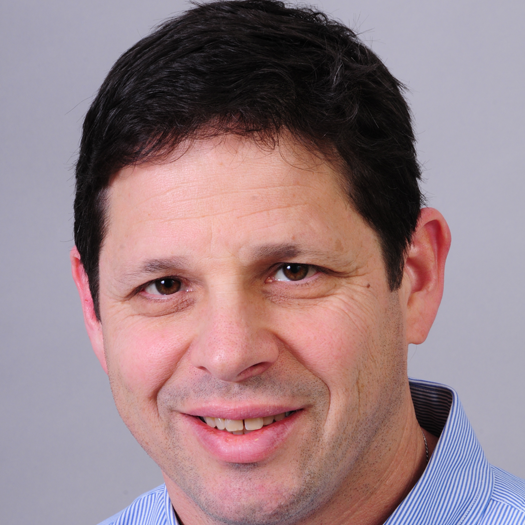Condition
Pediatric Spinal Muscular Atrophy
What is spinal muscular atrophy (SMA)?
Spinal muscular atrophy is a genetic disease that affects the motor nerve cells in the spinal cord, resulting in progressive muscle wasting and weakness. It typically begins in infancy or childhood years and affects about 1 in 11,000 babies.
Frequently Asked Questions
What causes spinal muscular atrophy in children?
Spinal muscular dystrophy is an autosomal recessive disease. This means that both males and females are equally affected, and that changes or mutations in two copies of the SMN1 gene (typically, one inherited from each parent), are necessary to have the condition. About one in every 50 Americans is a carrier for spinal muscular dystrophy.
Testing for spinal muscular dystrophy is done by looking for deletions (in nearly 95 percent of cases of SMA) or in a smaller number of cases looking for mutations in the SMN1 gene. Symptomatic individuals of all ages can be tested through DNA studies typically done from a blood sample. In addition, in some cases, prenatal testing can identify expecting parents who are at risk of having a child with SMA, and when desired, further fetal testing can be done. When both parents are carriers, there is a one in four, or 25 percent, chance, with each pregnancy, to have a child with spinal muscular dystrophy.
What are the symptoms of spinal muscular atrophy in children?
Spinal muscular atrophy is sometimes difficult to diagnose, as symptoms can resemble other conditions or medical problems. Each child may experience symptoms differently but all children show signs of weakness that gradually worsens over time, without signs of cognitive delay. There are four types of spinal muscular atrophy based on symptoms and age of onset. The child may have the following symptoms in the natural history of disease (or untreated form):
- Type I (also called Werdnig-Hoffman or infantile-onset SMA). This is the most severe type of spinal muscular atrophy and may be present at birth or in the first six months of life. Infants have problems holding their head, sucking, feeding, swallowing and typically move very little. Symptoms may not have been apparent right at birth and can become more evident within the first few months of life, and gradually progress. The muscles of the chest are also affected and can impact breathing. The motion of the tongue is described as having "worm-like" movements (also known as fasciculations). Death results usually by the age of two to six years from breathing problems. Children with SMA type I often require additional support for breathing and nutrition.
- Type II. The onset of this form of spinal muscular atrophy is typically seen in children from six months to 18 months of age. They typically have generalized muscle weakness, and although they are able to maintain independent sitting when placed, have difficulty transitioning into sitting and are more likely to crawl on their bellies than on hands and knees. By definition, these children clinically do not achieve independent standing (in the natural history of the disease when untreated). As the disease progresses, children with SMA type II can also be at risk for feeding difficulties, breathing problems (especially in sleep or with illness) and orthopedic problems (such as contractures, scoliosis and hip dislocation).
- Type III (also called Kugelberg-Welander or juvenile SMA). This form of spinal muscular atrophy affects children older than 18 months of age or as late as adolescence. These children have measurable muscle weakness and may show signs of clumsiness early and then progress to having difficulty walking, standing up or climbing stairs. These children will typically live long into their adult years. The frequency of feeding or respiratory difficulties in this group is smaller compared to individuals with SMA type I or type II.
- Type IV. This form of spinal muscular atrophy typically affects adults in their thirties and forties, resulting in walking difficulty and easy fatigability.
The symptoms of spinal muscular atrophy may resemble other problems or medical conditions. Always consult your child's doctor for a diagnosis. If SMA is suspected or there is unexplained weakness or low tone, you should be referred for further evaluation by a neurologist (preferably one with expertise in the evaluation of children with neuromuscular disease).
How is spinal muscular atrophy diagnosed in children?
The diagnosis of spinal muscular atrophy is made after the sudden or gradual onset of specific symptoms associated with progressively increasing weakness and after diagnostic testing. During the physical examination, your child's doctor will obtain a complete medical history of your child, and he or she may also ask if there is a family history of any medical problems.
Diagnostic tests that may be performed to confirm the diagnosis of spinal muscular atrophy include the following:
- Genetic tests: diagnostic tests that evaluate for conditions that have a tendency to run in families.
Other tests:
- Blood tests
- Muscle biopsy: a small sample of the muscle is removed and examined to determine and confirm a diagnosis or condition.
- Electrodiagnostic studies (EMG/nerve conduction study): A test that measures the electrical activity of nerves, and also measures a muscle or a group of muscles and the function of the associated nerves. An EMG can detect abnormal electrical muscle activity due to diseases and neuromuscular conditions.
When there is a known family history, or if parents are known to be carriers, testing may be done earlier. Some families will undergo prenatal testing including genetic testing during the pregnancy to determine if the fetus is affected. Testing can also be done after birth in the newborn to determine if the baby is affected with spinal muscular atrophy, even before symptoms begin.
Now that there are treatment options available, it is important to test for spinal muscular atrophy as soon as it is suspected or if there is a family history (or parents are known carriers), because earlier treatment is better for motor function.
How is spinal muscular atrophy treated in children?
Specific treatment for spinal muscular atrophy will be determined by your child's doctor based on:
- Your child's age, overall health and medical history
- The extent of the condition
- The type of spinal muscular atrophy
- Your child's tolerance for specific medications, procedures or therapies
- Your child’s ability to function compared to his/her peer group
- Expectations for the course of the condition
- Your opinion or preference
The key to medically managing spinal muscular atrophy is through early detection.
There are new therapies for patients with spinal muscular atrophy, with the first FDA approved treatment (approved December 2016) and new treatments in clinical trials. The FDA approved drug for spinal muscular atrophy is called Spinraza (Nusinersen) and it is a medication that is given into the spinal fluid space (through a spinal tap procedure). Our team at Children’s National Hospital is proud to be able to offer this treatment to our patients with SMA. We have a large program at Children’s National both for treatment and for close monitoring and systematic clinical follow up pre- and post- initiation of treatment. While a treatment may improve, slow down or halt the disease, it may not completely prevent aspects of the disease from occurring. Therefore, there is still a role for close multi-disciplinary follow up to manage other issues that can arise in children and young adults with SMA.
Respiratory
With the close follow up of a pulmonologist, we will assess your child’s breathing function. Some children may require assistance during times of illness (for example cough assist, suctioning or nebulizer treatments). Some children may require additional support for breathing in sleep or during naps (eg: BiPAP). Other children may have more severe respiratory difficulty and may require a breathing machine to help the child breathe easier. Children may need more close monitoring and evaluation during times of respiratory illness.
Feeding/Communication
We monitor a child’s ability to feed and swallow very closely to assess for risk of choking or aspiration. We also monitor the weight of our patients to determine if they are getting enough calories when fed orally, or if they require some additional assistance (eg: caloric supplementation or use of a feeding tube for supplementation). A speech therapist in our program also monitors a child’s language and communication skills and refers for ongoing outpatient therapies or communication strategies when indicated.
Musculoskeletal/Orthopedic
Our neuromuscular, physical medicine and rehabilitation, physical therapy and orthopedics teams work jointly to determine your child’s needs. This may include regimens for therapy, stretching programs, bracing, equipment for mobility and transfers and in some cases surgery (eg: scoliosis). Our team also works to track motor function and neurologic function over time.
Our SMA Care Center at Children’s National is under the co-directorship of Justin Burton, M.D., and Diana Bharucha-Goebel, M.D., and coordination of Kathleen Smart. We are proud to be designated as one of the first Cure SMA Care Center Network sites in the United States. Our team is committed to providing up to date, personalized, comprehensive and cutting-edge treatments and care for our patients. We closely serve as a resource for our patients and their families when engaging with their schools, community therapists and inpatient care teams during hospitalizations.

Movement Disorders Treatment at Children's National Hospital
The Movement Disorders Program at Children’s National offers evaluation, diagnosis and treatment to more than 400 children each year with conditions that affect the speed, quality and ease of their movement. Discover more about the treatments we offer.

Providers Who Treat Spinal Muscular Atrophy

Justin Michael Burton, MD
- Division Chief, Pediatric Rehabilitation Medicine
- Pediatric Rehabilitation Specialist
Justin Michael Burton, MD
Locations
Departments
Robert Francis Keating, MD
Locations
Departments

Jeffrey Philip Rabin, DO
- Vice-Chair, Pediatric Rehabilitation Medicine
- Pediatric Rehabilitation Specialist
- Chronic Pain Specialist
Jeffrey Philip Rabin, DO
Locations
Departments
Jul 22, 2024
Helping Maddie to Live Life to the FullestMaddie is a lively, creative teen who loves to act. Research at Children's National Hospital helps to ensure that her rare disease doesn"t upstage her big theater plans or her love of life.
Jun 27, 2024
Convenient Care for CharlotteWhen Charlotte was a toddler, a respiratory illness led to a diagnosis of a rare and dangerous immune deficiency called ICF syndrome. A bone marrow transplant at age 5 at Children’s National helped save her life.
May 20, 2024
Omid Conquers Fear with MusicOmid never liked going to the dentist. Dr. Aleger changed that with a little trust, and his favorite tunes.
Departments that Treat Spinal Muscular Atrophy

Movement Disorders Program
The Movement Disorders Program at Children’s National Hospital offers evaluation, diagnosis and treatment to more than 400 children each year with conditions that affect the speed, quality and ease of their movement.







